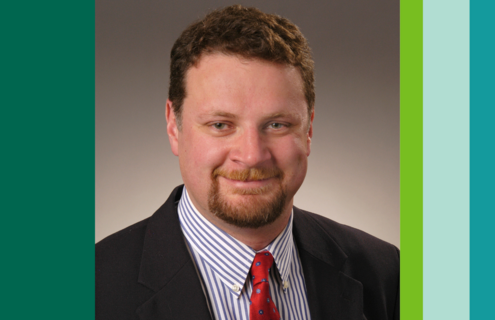
By making our community members more aware of the nuanced issues surrounding this problem, hopefully, we can work together to correct it.
Harneet Sethi, MDThis article is written by Harneet Sethi, MD, chair of Cheshire Medical Center's Emergency Department, and ran as an op-ed in the March 30, 2024, edition of The Keene Sentinel.
Once again, our staff at Cheshire Medical Center is trying to triage a major public health care problem. However, this time, it’s not a global pandemic prompting new patient pipeline issues. Instead, it’s about battling something perhaps even more complex — an unprecedented overcrowding situation.
If you or a loved one has recently required care in the emergency department anywhere in New Hampshire, then you are probably aware of the longer-than-normal wait times. So, the most obvious question — why the wait? Unfortunately, there are no easy answers or quick fixes to this health care conundrum. As someone who has dedicated my professional life to serving the urgent medical needs of the Keene community and our surrounding area, I’m compelled to be transparent with you (or residents) about this mounting public health quandary. By making our community members more aware of the nuanced issues surrounding this problem, hopefully, we can work together to correct it.
At the most basic level, the overcrowding crisis is about numbers — too many patients, and not enough beds. Currently, Cheshire Medical Center is operating with two-thirds of the inpatient beds unavailable due to “boarding” of both behavioral health and medical patients. Although we are seeing an increase in the number of people entering the emergency department, this is only a portion of a complex predicament.
As we triage the medical needs of these patients, we are forced to make difficult decisions about treatment plans due to limited availability of inpatient beds. In cases where patients need to be admitted, they are sometimes waiting or “boarding” in our emergency department as we await available beds. Due to the increasing number of hospitalized patients for whom there are limited or no post-hospital, long-term care options, too many patients are left at Cheshire Medical Center with no place to go. Ultimately, this strains hospital staff and resources. It also translates into longer waits for. However, these longer wait times are just symptoms of a deeper public health dilemma.
Add to this our state’s escalating nursing shortage, the lack of affordable workforce housing and child care, the limited availability of mental health services and New Hampshire’s status as the second-oldest population in the country, and it’s plain to see that Cheshire Medical Center is dealing with a serious health care emergency.
During the pandemic, personnel attrition rates in emergency medicine were already increasing. Post-pandemic, this continues to be a trend as people leave the field through retirement and migration. The inherently stressful, unpredictable nature of emergency medicine is not for everyone and, combined with the factors noted previously, the challenges we face with recruitment and retention are compounding the crisis for Cheshire Medical Center and many other hospitals throughout New England.
The mental health crisis continues to plague our region, and we see this play out in our emergency department every day. Sadly, there are not enough resources for individuals requiring intervention. As a result, emergency departments in Keene and elsewhere around the state and country have become de facto holding places for those who need acute mental health treatment and services. While we are committed to compassionate care for everyone, emergency departments are simply not equipped to manage the continuum of care for individuals dealing with mental health issues.
Regional demographics only further compound the overcrowding crisis. With more than 20 percent of New Hampshire’s population over the age of 65, emergency departments and hospitals are forced to respond to the unique health care needs of our aging population. Too often, there is no safe place for elderly patients to go once they complete their inpatient treatment. Currently, our long-term care facilities are not able to meet the rapidly growing demand for services.
Traditionally, we have been able to transfer many of our sickest patients to Dartmouth Hitchcock Medical Center in Lebanon. However, they, too, are facing similar capacity challenges. As a result, in too many instances, Cheshire Medical Center is forced to send patients out of state to Massachusetts, New York and Connecticut for continued care. Obviously, this adversely impacts timeliness of care, strains emergency medical services that must transport patients, and creates additional stress for patients and their loved ones.
As an emergency medicine physician, I hold myself and our teams to high standards of care. Despite these challenges, we remain committed to meeting the urgent medical needs of our community, but we need your help. We are asking the public to take the following steps to help alleviate the strain on our emergency department:
- If you don’t already have a primary care provider, get one. Prevention and early diagnosis can minimize the need for emergency care.
- Be sure to schedule and attend routine check-ups with your primary care provider.
- Develop a plan for your own potential long-term care needs.
- Be patient with health care workers as we navigate this overcrowding crisis; rest assured that we are doing our best to provide high quality care to every patient.
On behalf of everyone at Cheshire Medical Center, we thank you for your trust, understanding and collaboration as we work together to heal what’s broken in public health care.